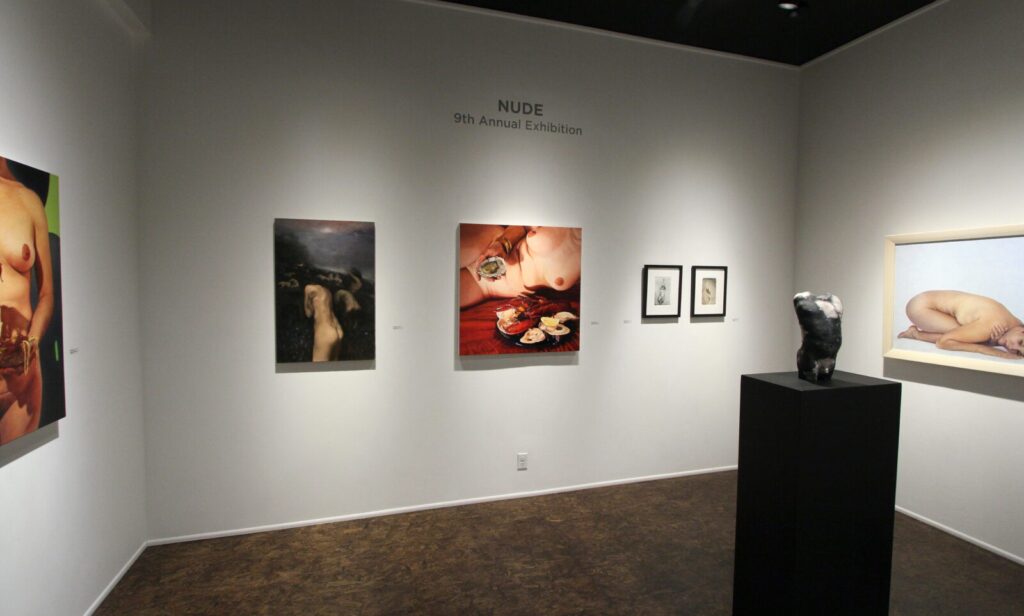Dora Natella’s Await (2017), a bronze sculpture of a sloping unclothed woman reaching behind herself to steady her position on a stool, functions as a metonym for Manifest’s ninth annual NUDE exhibition. It is unclear whether Natella’s figure is in the process of mounting the seat onto which she holds, readying herself as an object to be depicted, or if she is in descension from serving as a thing to be studied, drawn, or sculpted. In any case, Await maintains a degree of uncertainty regarding its subject.
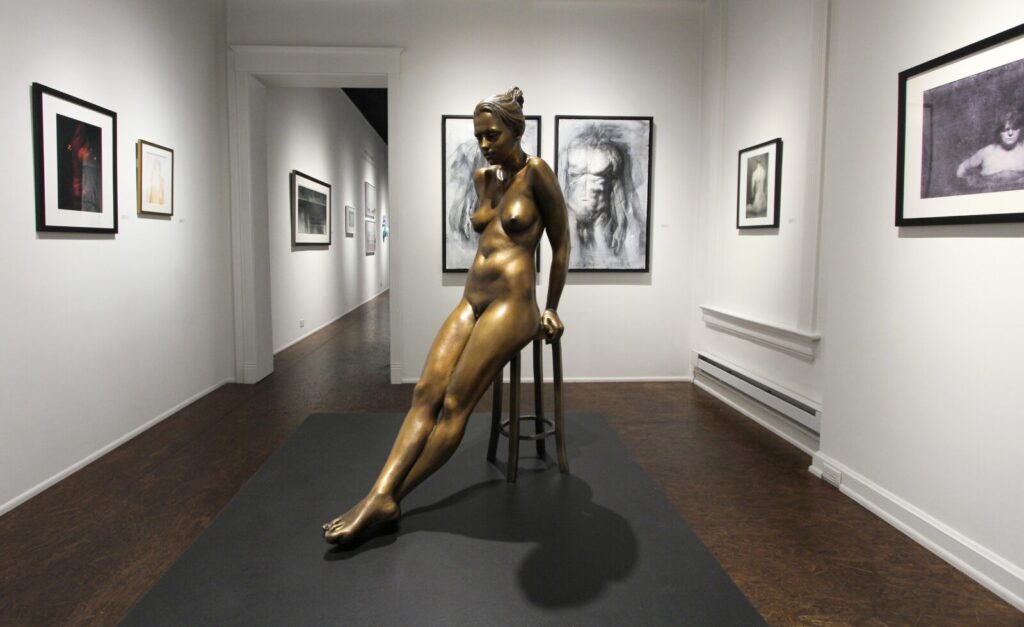
Like Natella’s sculpture, the exhibition at Cincinnati’s Manifest Creative Research Gallery and Drawing Center, which is on view in two of the organization’s galleries, intends to perplex. That is, the twenty-one works by sixteen artists on display, selected from over 500 submissions, render the human body in a manner unfamiliar.
Bodies are obscured in the drawings, paintings, sculptures, and photographs occupying Manifest in a multitude of ways. Limbs are severed by either strategic incompletion or the edges of a frame, and non-bodily objects are often utilized as a means for distortion, as is evident in Stephanie Grenadier’s Not Waving But Drowning (2017), wherein a woman is nebulously disconnected by ripples in water. Rarely in the exhibit are bodies in full view, a testament to the jurors’ commitment to representations of concealment and fragmentation.
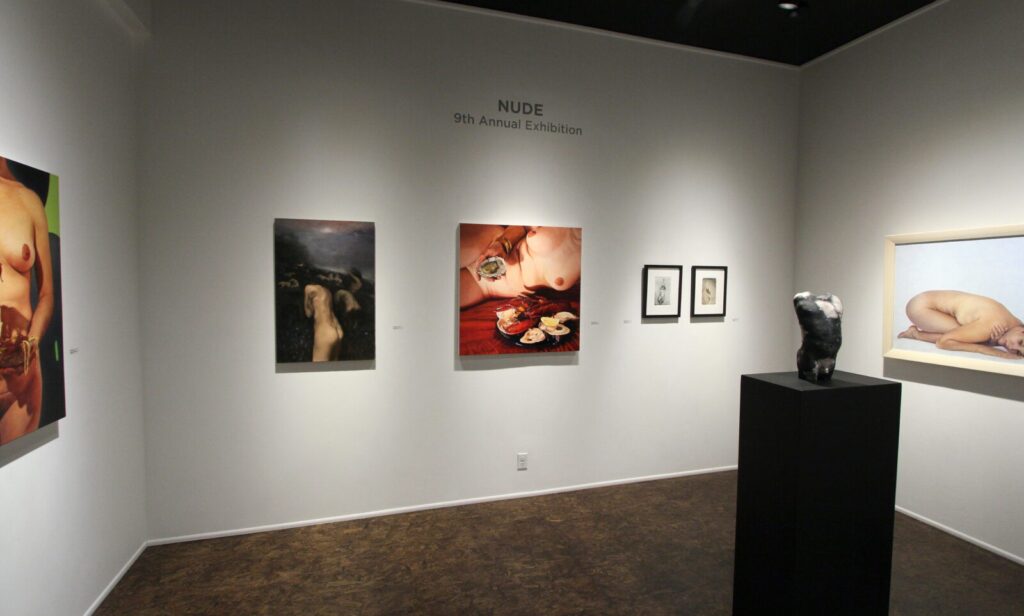
Indeed, the selection of artworks in NUDE emphasizes the body as necessarily unstable rather than as an object substantially grounded in the physical world. Some of the more effective works in the exhibition illustrating this conceit are photographs, since photographs rely on reality in the process of making an image. Annie Gonzalez’s Formation (2017) presents two enveloped bodies. Their torsos extend in opposite directions from what could be conceived as the epicenter of the photograph: the groins of each figure, which are touching, yet remain unseeable. Viewers perceive the backside of the figure in the foreground and are able to observe the left hip and side of the second figure peaking above his/her counterpart. The figure closest to the camera bends his/her head and arms so that neither appears in the image. The contours of the bodies in the photograph, as well as a protruding leg jutting from the lowest point in the composition, are disorienting, and Formation reads more like an abstracted dreamscape than a combination of human forms.
Whereas certain junctures in NUDE stress motifs of unfamiliarity and incompleteness literally, such as Nick Reszetar’s mixed media diptych entitled Virum Muliereum (2017), others investigate how these themes can be expanded to include implicit notions of protection.
A nude woman reclining on her back extends her left arm towards the viewer in Martin Beck’s The Hunter (2016). A dog rests at the foot of the platform from which she lies and a shotgun is settled next to the figure. Beck’s pastel drawing evokes certain classical trends through the incorporation of fabric as both a prop and cropping mechanism, the use of a direct light source, and the insertion of the dog—a dog symbolized fidelity in many nude paintings made in the pre-Modern era.
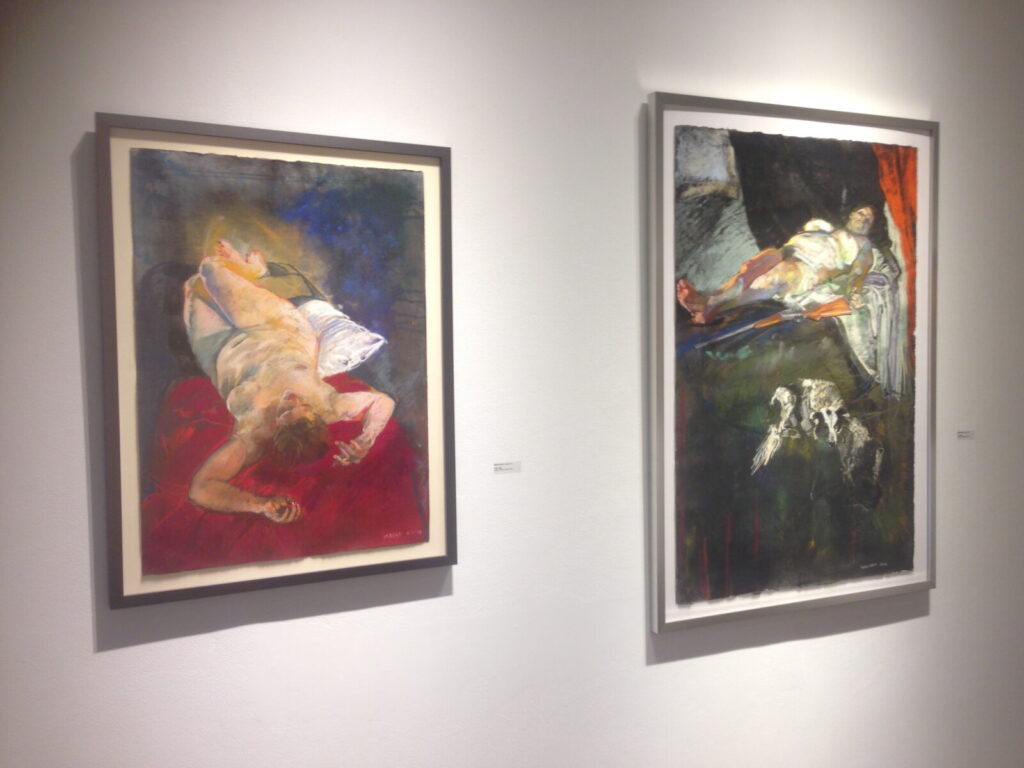
What distinguishes Beck’s portrait from those by old masters, among other elements of the drawing, is the depiction of the shotgun placed near the woman’s hand, pointing away from her, seemingly ready to be grabbed and employed. An overt insinuation of protection, the gun in this work may imply that to be nude is to be vulnerable. What’s more, with his inclusion of classical tropes, Beck suggests that the nude genre itself is possibly more susceptible than one may think, protected by the likes of museums and history books, and in actuality able to be redefined or modified. The Hunter assumes that historical precedents are merely guidelines and not rules. The portrayals of bodies in NUDE prevail as reminders that nothing is certain, particularly when it comes to ourselves.
If multiple artworks by a single artist are featured in the exhibition, they are displayed in the same gallery, yet not always adjacent. Visitors to Manifest will enter NUDE by first making their way through an exhibition called MONOCHROME, and the transition from one exhibition to the next is made smoothly—the first gallery of NUDE features works that are largely monochromatic or grayscale. Consequently, the second gallery of NUDE contains the more vibrant depictions of bodies, forcing viewers to negotiate between brilliant palettes and compelling subject matter. Alex Spinney achieves a fluorescent quality in Fakefood_1~Lobster/Oyster#prop (2017) and Realfood_1~freckles/Bolognese (2017), two paintings that allude to, in addition to concealment, consumption and pleasure through their combinations of food and the human form. Yet Spinney’s conceptual premise is dwarfed by the artist’s application of paint as well as the vividness of nudes by Beck, Chris Corson, and Martha Gaustad in the same gallery.
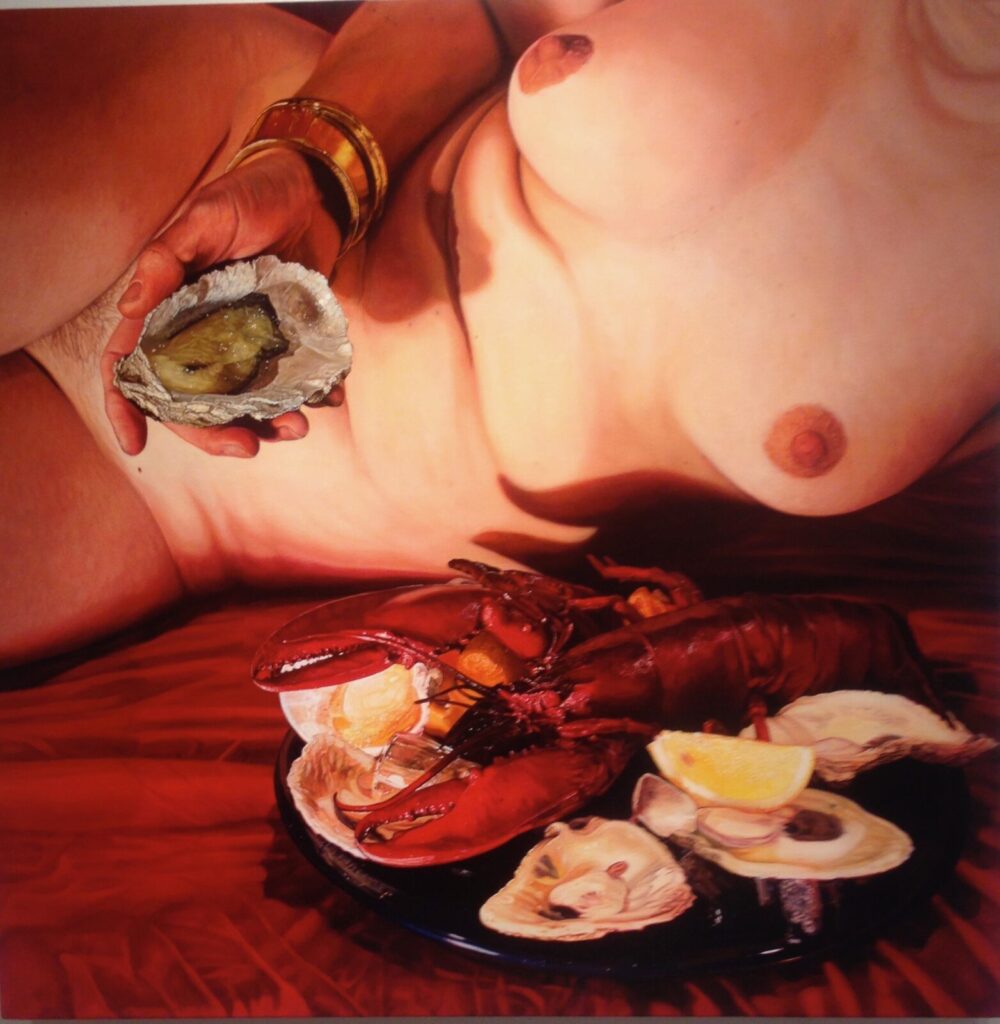
Were each gallery holding no more than a single work by an artist, NUDE would perhaps stress the thematic interests of the jurors in a more concrete fashion. In other words, integrating the monochromatic and color artworks would unify the exhibition in a mode that cannot be accomplished under its current layout. Yet such an endeavor does not come without a cost: there is a distinct elegance, especially on an aesthetic level, enacted by the curatorial decisions that resulted in the exhibition’s format.
Besides, the blatant differences of the artworks in the two galleries provide a kind of dualism when it comes to conceiving the ways in which the human body is capable of being rendered.
On one hand, the body is treated with reverence and precision in most of the monochromatic works. On the other, the use of color permeating the second gallery denotes an enthusiastic celebration of the human condition. This exhibition acknowledges the legitimacy—indeed, the history—of such representational strategies, but sensibly declines to favor one over the other. Like Await, viewers are encouraged to gauge the numerous ways of capturing and perceiving the nude genre. NUDE, therefore, posits an indeterminacy that resonates conceptually and corporeally.
The 9th annual NUDE exhibit continues at Manifest Creative Research Gallery and Drawing Center in Cincinnati, OH until September 15th, 2017.
